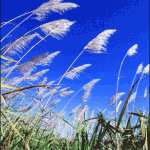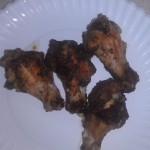Last week provided me with plenty of headlines to discuss. From theories about Colony Collapse Disorder in honey bees to the toxicity of sugar to the discovery of dangerous contaminants in chicken feathers, there’s certainly something for everyone here.

image courtesy of wpclipart.com
New Theories About Colony Collapse Disorder
In an April 7, 2012 submission to Slashdot, a reader shared the news that the Harvard School of Public Health managed to re-create Colony Collapse Disorder in honey bees. They gave the bees small amounts of imidacloprid (a neonicotinoid insecticide commonly used on pets and trees) to replicate the disorder. What’s more interesting though, the submission claims, is the fact that US corn growers started using this pesticide on their corn in 2004 and 2005, and the first cases of Colony Collapse Disorder became evident in 2006. Why does corn matter, you might wonder? Well, apparently, beekeepers will feed high-fructose corn syrup to their bees, and since those pesticides can’t be “washed off”, the bees are ingesting a bit of that poison every time they feed.
It’s funny because I remember when I first heard about GMO. I didn’t think it was that big a deal. I mean, in my mind, I wasn’t really concerned about the end product after they’d manipulated it. What I didn’t understand then, and what I think a lot of people don’t understand now though is WHY they’re modifying these crops. They’re modifying these crops so they can spray more poison on them, and like I’ve said before, you can no more get rid of these toxins by washing the produce than you can cure a drug overdose by taking a shower. It just doesn’t work like that. This situation with the bees is just another example of unintended consequences, but I’m sure someone’s going to find a way to point the finger elsewhere. It makes me CRAZY!

sugar cane image courtesy of wpclipart.com
More Researchers Acknowledge Sugar as a Toxin
If you ask any diabetic, they’ll have no trouble at all telling you that sugar is a toxin. After all, it only takes the equivalent of two TEASPOONS of sugar in your entire blood volume to keep you healthy. More and more these days though, folks are finally coming to terms with the fact that sugar is bad for everyone, and given my interests in low-carb and Paleo nutrition, this isn’t news to me. It thrills me to see that the idea is becoming more mainstream though, as yet another Slashdot post reveals.
What’s more, the Slashdot post went on to say that fat is better for you than sugar. Praise GOD, someone outside the Paleo/low-carb community is getting it right, and although I’m left saying, “It’s about time!”, I’m grateful for the positive press.

Crispy Jerk Chicken Wings
Disturbing Contaminants Found in Chicken Feathers
To me, one of the more disturbing news bits from last week was a story sent to me by my husband. Apparently, some researchers tested chicken feathers and found disturbing contaminants — arsenic, outlawed antibiotics, caffeine, acetaminophen, and diphenhydramine to name some — that would concern any reasonable human being.
I did happen to notice that the article’s tone seemed suspicious. It would be easy for one to think, after reading the article, that eating chicken is a terrible idea. And while most of us know that factory-raised and commercially-processed chicken is probably not the gold standard in healthy food, it doesn’t mean that we don’t have alternatives. I suspect that we’d all be much safer if we ate free-range chicken and eggs, but I also realize that’s not going to be realistic.
After thinking about it a bit more, I couldn’t help but wonder where these odd contaminants are coming from though. My first thought is the chickens’ water since we know that municipal water is contaminated with all sorts of toxins (including a myriad of drugs, heavy metals, and more.) I also couldn’t help but wonder where the researchers had gotten the feathers that they tested. Were they first washed in municipal water before they were tested?
If water isn’t the culprit, I’m certainly perplexed, but it doesn’t cause me to want to shun chicken. It just makes me think a little harder about sources for the chicken that I eat. There’s definitely a lot to think about there.
Articles of Interest:
In the News: Bees, Sugar, and Poultry Contamination
Last week provided me with plenty of headlines to discuss. From theories about Colony Collapse Disorder in honey bees to the toxicity of sugar to the discovery of dangerous contaminants in chicken feathers, there’s certainly something for everyone here.
image courtesy of wpclipart.com
New Theories About Colony Collapse Disorder
In an April 7, 2012 submission to Slashdot, a reader shared the news that the Harvard School of Public Health managed to re-create Colony Collapse Disorder in honey bees. They gave the bees small amounts of imidacloprid (a neonicotinoid insecticide commonly used on pets and trees) to replicate the disorder. What’s more interesting though, the submission claims, is the fact that US corn growers started using this pesticide on their corn in 2004 and 2005, and the first cases of Colony Collapse Disorder became evident in 2006. Why does corn matter, you might wonder? Well, apparently, beekeepers will feed high-fructose corn syrup to their bees, and since those pesticides can’t be “washed off”, the bees are ingesting a bit of that poison every time they feed.
It’s funny because I remember when I first heard about GMO. I didn’t think it was that big a deal. I mean, in my mind, I wasn’t really concerned about the end product after they’d manipulated it. What I didn’t understand then, and what I think a lot of people don’t understand now though is WHY they’re modifying these crops. They’re modifying these crops so they can spray more poison on them, and like I’ve said before, you can no more get rid of these toxins by washing the produce than you can cure a drug overdose by taking a shower. It just doesn’t work like that. This situation with the bees is just another example of unintended consequences, but I’m sure someone’s going to find a way to point the finger elsewhere. It makes me CRAZY!
sugar cane image courtesy of wpclipart.com
More Researchers Acknowledge Sugar as a Toxin
If you ask any diabetic, they’ll have no trouble at all telling you that sugar is a toxin. After all, it only takes the equivalent of two TEASPOONS of sugar in your entire blood volume to keep you healthy. More and more these days though, folks are finally coming to terms with the fact that sugar is bad for everyone, and given my interests in low-carb and Paleo nutrition, this isn’t news to me. It thrills me to see that the idea is becoming more mainstream though, as yet another Slashdot post reveals.
What’s more, the Slashdot post went on to say that fat is better for you than sugar. Praise GOD, someone outside the Paleo/low-carb community is getting it right, and although I’m left saying, “It’s about time!”, I’m grateful for the positive press.
Crispy Jerk Chicken Wings
Disturbing Contaminants Found in Chicken Feathers
To me, one of the more disturbing news bits from last week was a story sent to me by my husband. Apparently, some researchers tested chicken feathers and found disturbing contaminants — arsenic, outlawed antibiotics, caffeine, acetaminophen, and diphenhydramine to name some — that would concern any reasonable human being.
I did happen to notice that the article’s tone seemed suspicious. It would be easy for one to think, after reading the article, that eating chicken is a terrible idea. And while most of us know that factory-raised and commercially-processed chicken is probably not the gold standard in healthy food, it doesn’t mean that we don’t have alternatives. I suspect that we’d all be much safer if we ate free-range chicken and eggs, but I also realize that’s not going to be realistic.
After thinking about it a bit more, I couldn’t help but wonder where these odd contaminants are coming from though. My first thought is the chickens’ water since we know that municipal water is contaminated with all sorts of toxins (including a myriad of drugs, heavy metals, and more.) I also couldn’t help but wonder where the researchers had gotten the feathers that they tested. Were they first washed in municipal water before they were tested?
If water isn’t the culprit, I’m certainly perplexed, but it doesn’t cause me to want to shun chicken. It just makes me think a little harder about sources for the chicken that I eat. There’s definitely a lot to think about there.
Articles of Interest: